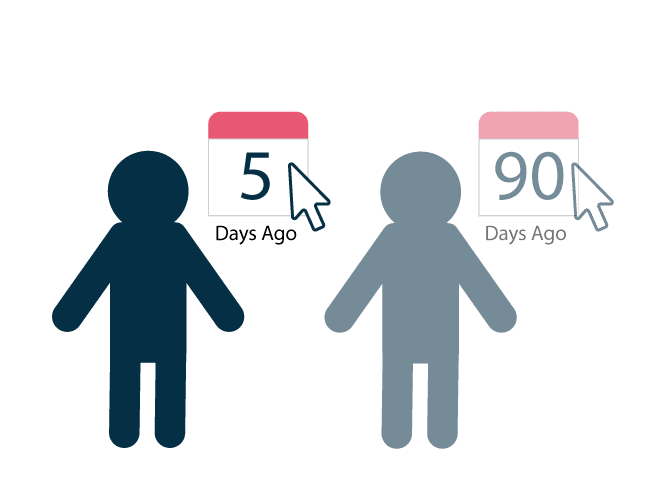Why Should I Create Remarketing Campaigns?

Remarketing (or sometimes, “retargeting”) is a commonly overlooked area with many e-commerce owners, agencies, and other stakeholders. Why is it important? Just like brick-and-mortar stores, it’s likely easier for e-commerce businesses to get a sale from a previous customer than a new customer, and it’s less costly most of the time. However, e-commerce stores have an easy way to measure how someone has interacted with their site and whether they converted with on-site analytics – and can capitalize on that information. That’s where remarketing audiences come in!

How to Use Remarketing Audiences

The value of a recent click vs. an older click depends on the product you’re selling. Is it something that requires a long time to make a decision? Or are customers easily persuaded to pursue alternatives?
What if you could dissect the difference between a user that interacted with a product page five days ago, and someone who interacted with just the homepage of your site 90 days ago? Well, with remarketing audiences—you can! Even better, you can assign bid modifiers or tailor your ads to each one of these segments—which in turn can be extremely valuable to your e-commerce PPC program.
Let’s walk through some best practices for creating remarketing audiences. To start, you want to cover a decent time frame for any potential sales to occur. Depending on the item, you’ll likely want to have a number of audiences with a different number of days associated with each group—for example, one for 5, 10, 30, 60, or 90 days.

Other considerations could be important as well. If you sell a highly seasonal item, like winter sporting goods/apparel, you need make sure you have very recent date ranges targeted (like 5, 10, or 15 days) because people searching for your items are probably looking to buy your goods now rather than later, and you have a limited time to capitalize on the sale. Also, you’d likely want to have an audience segment based on people that viewed your site a year ago (i.e. in the previous season), as they’re already familiar with your brand and the propensity to buy is likely heightened to a certain degree.
In addition, you’ll want to factor the type of page visited into your remarketing audiences. For example, it’s common knowledge that a category page viewer likely isn’t as valuable as someone who has abandoned a full shopping cart.

Our Approach
At Omnitail, we design intricate audiences catered to our clients’ category or industry. For example, an e-commerce site that sells jewelry is vastly different than a site that has a lead objective, like getting people to sign up for something.
Once all of our audiences have been curated to fit your needs, the final step is to apply them in various layers across Shopping, Display, and Search campaigns. You also may want to couple these with bid modifiers based on how those audiences interact with various ads. This combination allows for 1) transparency, 2) efficiency and 3) concrete insights into how consumers interact with your site, thus allowing us to tailor your strategy accordingly.
Interested in learning how we apply remarketing audiences? Get our step-by-step e-book guide!








